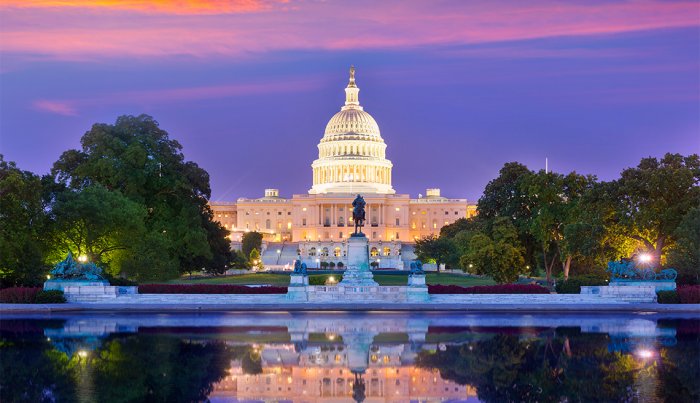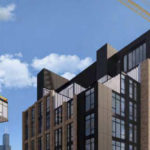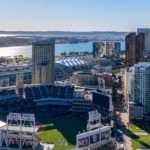Permit Expeditor’s Guide to Washington, D.C.

With so many building regulations and historic districts, Washington, D.C. can seem like a daunting place to start a construction project. But it doesn’t need to be. With the right information and team of experts on hand, you can ensure that your project gets approval in a timely and efficient fashion.
The shift to virtual work helped make the permit process in Washington much smoother, but there’s still key information you need to know before getting started. We sat down with David Leath, who oversees Milrose’s Washington D.C. office, to get a primer on how to navigate the permitting process inside the beltway.
What you need before applying for a building permit
Before you apply for a building permit, it’s important to know the types of projects that actually require official approval in Washington. Typically, anything proposing significant construction or structural changes will require a permit. This includes new buildings or foundations, demolition, and the erection of signs/awnings, among others. Cosmetic changes like window screen installation, painting, or anything done to the roofing or siding don’t usually require permits.
If you’ve determined that your project requires a permit, you need to start collecting the necessary documents for your application. For a standard permit application, you will need drawings for the following:
- General
- Fire protection
- Architectural
- Structural
- Electrical
- Mechanical
- Plumbing
There are a number of circumstances in which you’ll also need to provide site plans. These are typically required if the scope of work requires any change to the actual site, such as any permanent construction outside the footprint of the existing buildings.
The process of obtaining a permit
- Learn your property restriction and status: First, you need to determine whether any building restrictions apply to your project, which could add additional zoning regulations that you need to comply with. Common agencies that administer restrictions include the Historic Preservation, the National Capital Planning Commission, and the U.S. Commission of Fine Arts.
- Determine your full scope of work: You need to detail every aspect of your project that might require approval to help identify exactly what types of permits will be needed. This will also help you determine if you’ll need to provide any additional documentation to complete the process.
- Permit application and filing fee: Once you’ve taken care of the necessary pre-application requirements, you can begin the application process. Permit applications can be handled online using the DCRA Permit Wizard, so when you’ve created an account, you’re ready to start. Schedule an inspection and select the right permit type, and supply any other required information.
- Pre-screening: Prior to moving to the plan review stage, an official will review all information, plans, and documentation provided to ensure you have met the minimum requirements for plan review.
- Plan review: The Department of Consumer and Regulatory Affairs (DCRA) reviews all documentation and plans and makes a determination. The DCRA now has a host of different online reviewal options that help streamline the process for many applicants and can cut down the amount of time it takes to receive a decision. Depending on your scope of work, other municipal agencies may also need to review (and approve) your project.
- Payment of outstanding balance (if any) and permit issuance: Once the entire process has been completed and your plan is approved, you must pay any outstanding processing fees. Applicants should receive an invoice if they completed in-person walk-through applications, and an email if they did a ProjectDox application.
Accelerated plan review
The entire review process could take several weeks, but the DCRA offers alternative options to applicants to help them complete the process faster, for a fee. Project X and the Velocity Program are the two main initiatives for accelerated plan review available to applicants.
Project X
Under this initiative, applicants can meet with reviewers online using audio, video, and screen-sharing digital capabilities to share information without having to actually meet in an office. Reviewers can identify any problems or compliance issues, helping applicants resolve issues earlier on and preventing hiccups from arising during the review process.
Project X allows applicants to undergo the review process in a fraction of the time. If everything checks out and reviewers find no compliance issues, the process can be completed in as little as one day.
Velocity Program
Applicants can pay to participate in the fast-track Velocity Program to accelerate the entire approval process for their application. Velocity helps applicants get approval in about half the time. It’s important to note, however, that Velocity reviews only cover the standard permit approval process, so applicants will still be required to adhere to the review timelines established by other agencies (including DC Water, DDOT, WMATA and others).
Other review alternatives
Digital walk-through plan review
Applicants with small projects now have the option of getting their plans reviewed online. Previously, many of these projects had to be reviewed in person using paper plans. The digital option saves applicants time and eliminates much of the frustration that can come with the in-person submission of plans and other relevant documentation.
Not all projects can be streamlined using a digital walk-through. The most common ones include:
- Alterations under 1,000 square feet
- Fencing
- Signs
- Retaining walls
Depending on the nature of the project and the application, the digital walk-through process can be completed in as little as one business day.
Standard plan review
Standard plan reviews use the ProjectDox online platform, which allows applicants to submit all their drawings and supporting documents online. In contrast to digital walk-through reviews, standard reviews involve bigger projects, so applications tend to be more complex and usually require at least 1-2 business days to pass pre-screen.
Beyond pre-screening, the DCRA allocates 30 business days to review standard filings, so applicants may need to wait up to a month before receiving a decision on their review. Other municipal bodies (including DC Water, DDOT and DDOH) may be required to review the project depending on the scope of work. This could further prolong the process.
Pre-application zoning services
With so many moving parts, it can be easy to forget a key piece of information when you submit your application and have to start the entire process from the beginning. For large-scale projects, a Preliminary Design Review Meeting (PDRM) can help keep this from happening. Applicants can have their permit applications reviewed before formally submitting them to the DCRA.
PDRM reviewers can identify any missing documentation, ensuring that applicants are filing accurate and compliant drawings along with their applications. That enables them to undergo the entire process faster and without any unnecessary hiccups. PDRMs are available to be scheduled online.
Why hire a permit expediter?
The DC area permit approval process can be difficult to navigate, so it’s important that you team up with the right experts to help ensure the proper permit filing strategy is identified and executed so your project hits its target deadlines and unnecessary delays and costs are avoided. Our code, zoning, and permitting experts to have the local knowledge and experience needed to be able to guide your DC project to success. Contact David Leath in our Washington DC office today to learn more about our services and our experience bringing value to construction projects throughout the DMV.




